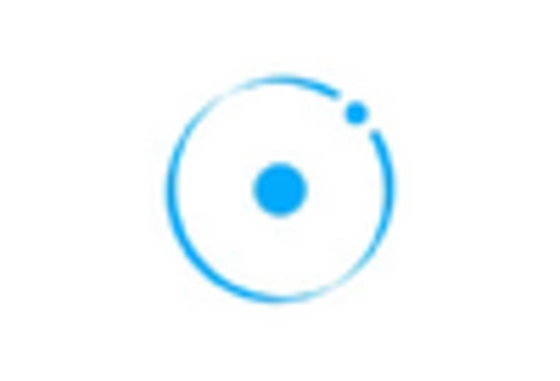Government Policies and Incentives
Government policies and incentives play a pivotal role in shaping the Hydrogen Market. Many countries are implementing supportive frameworks to promote hydrogen production and utilization. For instance, various nations have introduced subsidies, tax breaks, and grants to encourage research and development in hydrogen technologies. The Hydrogen Market benefits from these initiatives, as they lower the financial barriers for companies looking to invest in hydrogen projects. Furthermore, regulatory measures aimed at reducing carbon emissions are likely to bolster the market, as they create a favorable environment for hydrogen adoption. As governments continue to prioritize clean energy, the Hydrogen Market is expected to expand significantly in the coming years.
Investment in Research and Development
Investment in research and development is crucial for the advancement of the Hydrogen Market. Increased funding from both public and private sectors is driving innovation in hydrogen technologies. Recent reports indicate that global investment in hydrogen R&D has surged, with billions allocated to projects aimed at improving production methods, storage solutions, and fuel cell technologies. This influx of capital is likely to accelerate breakthroughs that enhance the efficiency and scalability of hydrogen applications. Moreover, collaboration between governments, academia, and industry stakeholders is fostering a conducive environment for innovation. As the Hydrogen Market evolves, sustained investment in R&D will be essential for overcoming existing challenges and unlocking the full potential of hydrogen as a clean energy source.
Rising Demand for Clean Energy Solutions
The Hydrogen Market is experiencing a notable surge in demand for clean energy solutions. As nations strive to meet stringent climate targets, hydrogen emerges as a viable alternative to fossil fuels. The International Energy Agency indicates that hydrogen could account for up to 18% of the total energy demand by 2050. This shift is driven by the need to decarbonize various sectors, including transportation and industrial processes. Consequently, the Hydrogen Market is witnessing increased investments and innovations aimed at producing hydrogen sustainably. The growing awareness of environmental issues among consumers and businesses alike further propels this demand, suggesting a robust future for hydrogen as a cornerstone of the clean energy transition.
Growing Industrial Applications of Hydrogen
The Hydrogen Market is witnessing a diversification of applications across various industrial sectors. Hydrogen is increasingly being utilized in refining, ammonia production, and as a feedstock for chemical processes. The demand for hydrogen in these industries is projected to grow, with estimates suggesting that industrial applications could account for over 60% of hydrogen consumption by 2030. This trend indicates a shift towards hydrogen as a critical component in achieving sustainability goals within heavy industries. Furthermore, the Hydrogen Market is likely to benefit from the increasing adoption of hydrogen fuel cells in transportation, which could further expand its industrial footprint. As industries seek to reduce their carbon footprints, hydrogen's role is expected to become more pronounced.
Technological Advancements in Hydrogen Production
Technological advancements are transforming the Hydrogen Market, making hydrogen production more efficient and cost-effective. Innovations in electrolysis, particularly the development of proton exchange membrane (PEM) technology, have enhanced the feasibility of producing green hydrogen. According to recent data, the cost of producing hydrogen through electrolysis has decreased by approximately 50% over the past decade. This trend is likely to continue as research progresses, further driving the Hydrogen Market. Additionally, advancements in carbon capture and storage technologies are enabling the production of blue hydrogen, which is seen as a transitional solution. These technological improvements not only enhance the economic viability of hydrogen but also contribute to its broader acceptance as a key player in the energy landscape.

















Leave a Comment